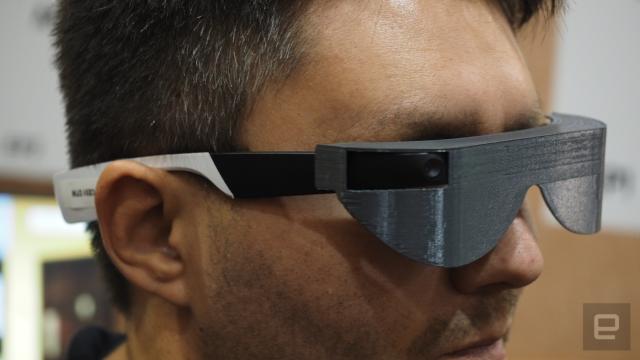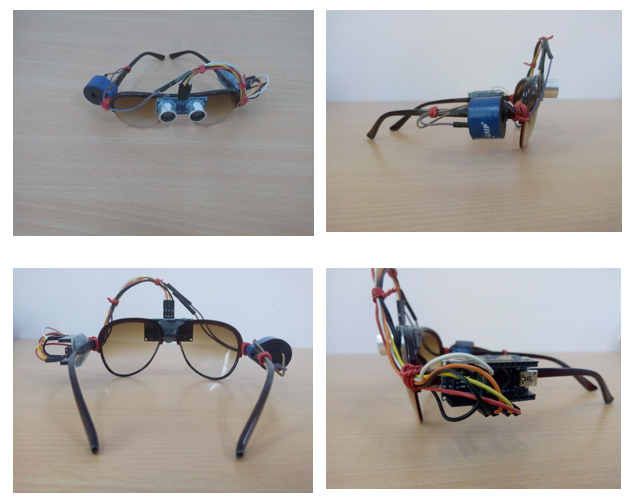Voice-Activated Assistive Devices: Empowering the Visually Impaired Through Innovation
Voice-Activated Assistive Devices: Empowering the Visually Impaired Through Innovation
Blog Article
Enhancing Ease Of Access With Assistive Innovation for the Blind
The combination of assistive innovation for the blind stands for an essential development in accessibility, essentially changing exactly how individuals navigate their settings and involve with society. From display visitors to ingenious wise canes, these devices not only boost freedom yet additionally advertise inclusivity in different spheres of life. As we explore the diverse sorts of assistive tools and their concrete effects on daily living, it becomes vital to check out exactly how ongoing technical advancements are improving the landscape of assistance for the blind neighborhood. What ramifications do these advancements hold for the future of accessibility?
Summary of Assistive Technology
Assistive modern technology refers to a variety of gadgets and software program developed to enhance the abilities of people with specials needs, consisting of those who are aesthetically impaired or blind. This innovation plays an important duty in promoting self-reliance and boosting the high quality of life for users. By supplying different techniques for accessing details and carrying out day-to-day jobs, assistive innovation encourages individuals to browse their settings much more successfully.
The development and application of assistive modern technology embrace a variety of concepts targeted at fostering ease of access. These concepts consist of user-centered design, which prioritizes the requirements and preferences of the individual, and the assimilation of modern technology right into daily activities. Such developments ensure that assistive devices are not just useful however easy and likewise user-friendly to make use of.
Furthermore, assistive technology incorporates a varied spectrum of solutions, from low-tech options like magnifiers to sophisticated technologies such as display readers and Braille displays. The recurring development of this field is driven by the demand to attend to the distinct obstacles encountered by individuals with aesthetic problems (Wearable technology for low vision). As innovation proceeds to advance, the potential for enhancing accessibility and promoting inclusivity remains promising, inevitably adding to an extra fair culture

Types of Assistive Tools
Numerous types of assistive gadgets are readily available to support individuals who are blind or aesthetically damaged, each created to resolve certain demands and obstacles. These tools can be broadly categorized into three primary kinds: low-tech, mid-tech, and state-of-the-art remedies.
Low-tech devices include products such as magnifiers, Braille tags, and tactile maps. These are reasonably simple tools that boost the customer's capacity to interact with their environment without needing complicated technology.
Mid-tech devices frequently include a lot more sophisticated attributes, such as digital magnifiers and mobile Braille note-takers. These gadgets can use performances like speech outcome, enabling individuals to gain access to information a lot more successfully.

Effect On Daily Living
The accessibility of different assistive devices considerably improves the high quality of life for individuals that are aesthetically damaged or blind, influencing their day-to-day living in extensive means. By incorporating modern technologies such as display viewers, Braille presents, and audio summary solutions right into their regimens, individuals get higher autonomy and self-reliance. These tools help with access to information, enabling individuals to perform day-to-day jobs, such as reviewing e-mails, navigating public spaces, and delighting in media material.
Furthermore, assistive devices empower people to involve even more totally in social interactions and community tasks. The capacity to use mobile phones equipped with ease of access features enables smooth communication and link with others. This connection promotes a sense of belonging and lowers sensations of isolation.
In professional setups, assistive innovation supports performance by enabling individuals to full work tasks effectively. Devices like voice recognition software application and specialized magnifying devices allow customers to take part in the labor force on equivalent footing with their sighted peers.

Innovations in Technology
Recent technological developments have significantly transformed the landscape of devices offered for individuals who are blind or aesthetically damaged. The combination of expert system (AI) and equipment learning has actually provided increase to applications that improve navigating and item acknowledgment. For example, smartphone applications can currently utilize AI to recognize and define environments in real-time, supplying individuals with important contextual information.
Additionally, innovations in haptic modern technology have resulted in the development of clever walking sticks geared up with sensing units that find obstacles and give responsive feedback. This encourages individuals to browse their atmosphere with increased self-confidence and self-reliance. Furthermore, advancements in text-to-speech software application and braille display screens have actually boosted the access of digital web content, permitting seamless interaction with go right here numerous media.
Wearable innovations, such as smart glasses, are additionally making strides in aiding visual disability. As modern technology proceeds to advance, the capacity for also more transformative devices continues to be on the horizon.
Future Trends and Innovations
As modern technology quickly advances, the future of assistive tools for people who are blind holds immense assurance. Advancements in expert system (AI) and equipment discovering are poised to change the method blind users connect with their atmospheres. AI-driven applications are being developed to boost object acknowledgment, enabling users to recognize and navigate their environments click here for more with higher convenience and accuracy.
In addition, developments in haptic responses innovation are making it possible for the creation of tactile maps and navigating aids that give real-time info via touch. These developments not just enhance wheelchair yet also foster freedom. Additionally, wearable gadgets equipped with enhanced fact (AR) functions are emerging, using individuals aesthetic details through sound descriptions, therefore bridging the space in between the digital and physical worlds.
Additionally, the integration of wise home modern technology offers brand-new opportunities for availability, permitting individuals to control their living atmospheres via voice commands or smart device applications. As collaboration between tech designers and the blind area proceeds, the concentrate on user-centered design will make sure that future technologies are customized to meet the unique needs of this population (Wearable technology for low vision). The trajectory of assistive innovation guarantees an extra comprehensive and empowering future for people who are blind
Conclusion
In verdict, assistive modern technology plays a vital function in boosting accessibility for individuals with visual impairments. The diverse range of gadgets, including screen readers and smart canes, considerably improves daily living and fosters independence. Continuous advancements in technology and user-centered design ensure that these devices provide properly to the special requirements of the blind neighborhood. As developments progress, increased inclusivity and empowerment can be prepared for, inevitably enhancing the lifestyle for those influenced by visual problems.
The integration of assistive modern technology for the blind represents a pivotal advancement in access, essentially altering just how individuals browse their atmospheres and engage with culture.Assistive technology refers to an array of devices and software program created to enhance the abilities of individuals with disabilities, including those that are aesthetically impaired or blind. Wearable technology for low vision.As modern technology rapidly proceeds, the future of assistive tools for people who are blind holds enormous promise. The trajectory of assistive innovation promises a much more comprehensive and empowering future for people that are blind
In conclusion, assistive innovation plays a crucial function useful content in boosting ease of access for people with visual disabilities.
Report this page